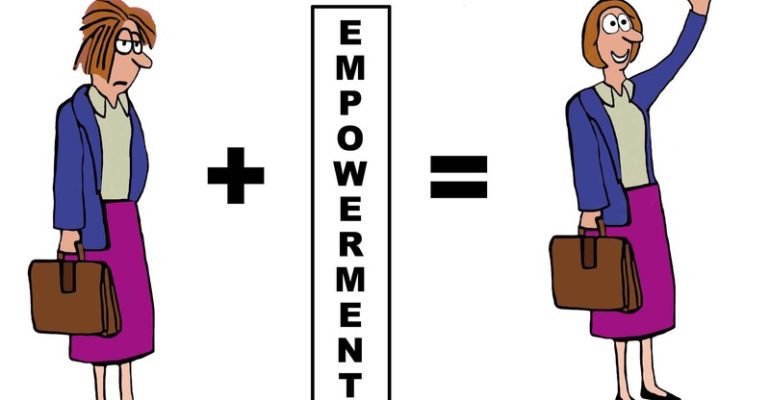How to Prevent Burnout: SWEET Clinicians’ Secrets
What is burnout?
The short response to this question is: Burnout is a state of chronic physical and emotional exhaustion[1]. It is characterized by:
- A feeling of depletion
- Cynicism and detachment
- Lack of Motivation, and
- A sense of ineffectiveness or lack of accomplishment
It can impact various aspects of our lives, as clinicians, including our work performance, our therapeutic relationship with our clients, and our overall well-being.[2]
With over 70% of clinicians affected by burnout[3], being able to recognize burnout is key to addressing and preventing it. But is it so easy to recognize burnout?
The symptoms of burnout can manifest in different ways, and this may make it less easy to recognize, contrary to what we might think. Six ways burnout can manifest itself include:
- Physical Exhaustion
- Emotional Exhaustion
- Reduced Productivity
- Cynicism and Detachment
- Lack of Motivation
- Increased Irritability
But, these, themselves, can also be just words. Let us take a deeper look.
Physical Exhaustion[4]:
This is when we start to feel drained, and tired, showing a lack of energy even after adequate rest and sleep. This is not just one bad night. Rather, this is happening more often than not; or at least multiple times during the week. This may also manifest as headaches, muscle tension, sleep disturbances, changes in appetite, or any other physical symptoms. All this may, indeed, be a sign of burnout. This may be the sign for us to take a step back.
Emotional Exhaustion[5]:
As clinicians, we may be experiencing burnout when experiencing a sense of emotional depletion, detachment, and being overwhelmed by daily tasks and responsibilities. The operative word here is “overwhelmed.” For it is not necessarily the tasks or responsibilities. Rather, it is a feeling of being overwhelmed, as part of emotional exhaustion. As one of the tenets of CBT puts it, “Our perception of a situation and not the situation itself, determines the feelings and behaviors that follow.” This does not mean we are to blame ourselves. This is not an excuse to surrender to our schemas. Rather, it is an opportunity for us to, once again, take a step back. For, this, indeed, may be a sign of burnout.
Reduced Productivity[6]:
There are times when we find ourselves with:
- A decreased effectiveness and productivity in our work with our clients
- Difficulty concentrating
- Increased errors or mistakes in a variety of tasks that we perform on a regular basis
Our brain is economical. The moment we start doing something, it starts looking for ways to do it more efficiently. This, in turn, makes us productive as we continue to perform the tasks. Yet, this whole mechanism may be jeopardized by a process of burnout. This means the moment we find ourselves being less and less productive, having difficulty focusing, and making more and more mistakes, it is a sign for us to take a step back. For, once again, just as anything else, the process of burnout, is, indeed, an opportunity, if we know how to use it optimally.
Cynicism and Detachment[7]:
How about our attitude or a change thereof? Are you seeing your clients through the lens of a growth mindset[8] or one of a fixed mindset? Do you think “they’ll just never get better,” or “they just do not want to get better,” or “there is just nothing that can be done for them”? Well, however realistic any of these may sound, it may be a classic sign that we are going through a process of burnout. For, as clinicians, we are healers. Healers use hope and not hopelessness. Healers use courage and not helplessness or apathy. Healers look to the future and do not allow loss to paralyze them forever. Yet, in the midst of a process of burnout, our ability to do any of that is compromised. Time, then to take a step back.
This interfering attitude, which, in the burnout literature is known as cynicism can take different forms and be seen in different contexts, including in our relationship with our colleagues or with ourselves. Time to pay closer attention. Time to take a pause. Time to reflect.
Lack of Motivation[9]:
As clinicians, we are intrinsically motivated to make a difference. This is undeniable. Yet, at times, it may be hard to experience the faintest presence of such a thing, called motivation. While this is, regrettably, more common than not, and while we are not alone in this experience, it is important for us to recognize that this, too, can be a sign of burnout. During burnout, we may present with a loss of motivation and decreased interest or enjoyment in all the important work we do with our clients. This, in turn, is accompanied by a sense of disillusionment, and that level of cynicism that we mentioned earlier.
Increased Irritability[10]:
Isn’t it “ok” for us to express our emotions? Well, being easily frustrated, short-tempered, or having frequent conflicts with others, while may seem to be “ok,” may actually be a sign of an underlying process-the process of burnout. In fact, this level of irritability may not be happening simply with our colleagues, but also with our boss, the non-clinical staff, our children, our spouse, or other family members. This is nothing for us to be embarrassed about. This is part of a process-likely a process of burnout; and we can do something about it.
What is next?:
- Let us look and see which of these 6 ways burnout may be manifesting itself in our life
- Let’s reach out. The vision of the SWEET Institute is to provide a safe space for all clinicians throughout the world to have the tools they need, including the tools to prevent and address burnout
- Consider attending one of the following relevant seminars that may help provide you with additional tools:
D. Schema Therapy for Clinicians
4. Attend our next Virtual Conference on CBT for Low Self-Esteem
[1] Maslach, Christina, and Michael P. Leiter. “Burnout.” Stress: Concepts, cognition, emotion, and behavior. Academic Press, 2016. 351-357.
[2] Maslach, Christina. “Burnout: A multidimensional perspective.” Professional burnout. CRC Press, 2018. 19-32.
[3] Jankovic, Ivana, and Jonathan H. Chen. “Clinical decision support and implications for the clinician burnout crisis.” Yearbook of Medical Informatics 29.01 (2020): 145-154.
[4] Brady, Keri JS, et al. “Describing the emotional exhaustion, depersonalization, and low personal accomplishment symptoms associated with Maslach Burnout Inventory subscale scores in US physicians: an item response theory analysis.” Journal of patient-reported outcomes 4 (2020): 1-14.
[5] Seidler, Andreas, et al. “The role of psychosocial working conditions on burnout and its core component emotional exhaustion–a systematic review.” Journal of occupational medicine and toxicology 9.1 (2014): 1-13.
[6] Whiteoak, John, Daniel Abell, and Karen Becker. “The leadership challenge of increasing productivity in the workplace without increasing burnout risk.” Leadership & Organization Development Journal 44.2 (2023): 260-273.
[7] Simbula, Silvia, and Dina Guglielmi. “Depersonalization or cynicism, efficacy or inefficacy: what are the dimensions of teacher burnout?.” European journal of psychology of education 25 (2010): 301-314.
[8] Dweck, Carol. “What having a “growth mindset” actually means.” Harvard business review 13.2 (2016): 2-5.
[9] Dugani, Sagar, et al. “Prevalence and factors associated with burnout among frontline primary health care providers in low-and middle-income countries: a systematic review.” Gates open research 2 (2018): 4.
[10] Tavella, Gabriela, and Gordon Parker. “A qualitative reexamination of the key features of burnout.” The Journal of Nervous and Mental Disease 208.6 (2020): 452-458.









